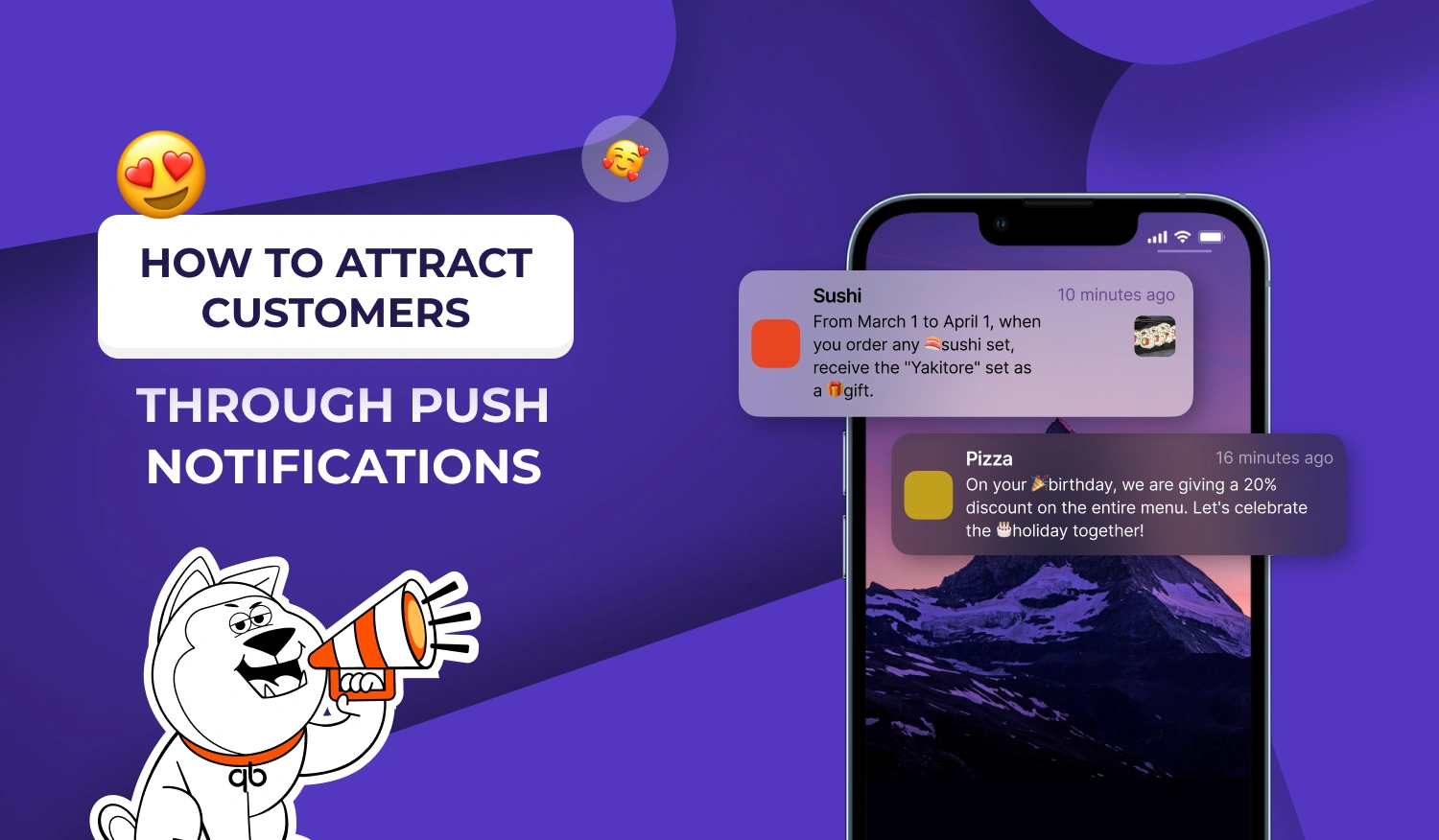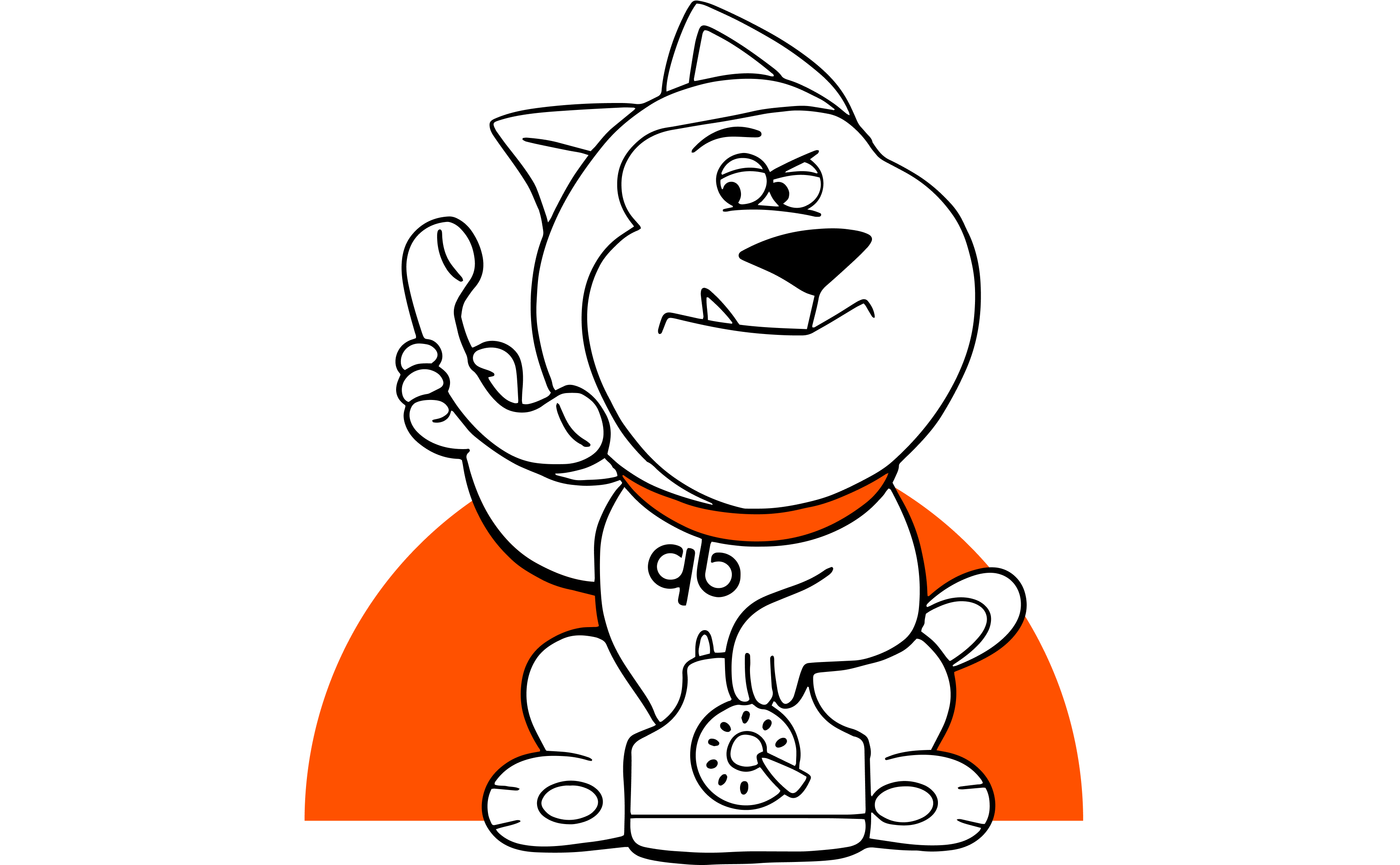In 2025, push notifications are a powerful tool for customer engagement in mobile apps. According to Braze, push notifications boost customer interaction by 88% and can increase sales conversions by 20–30%. Ready-made mobile apps, such as those built on no-code platforms (Appy Pie, Adalo) or SaaS platforms (Shopify, Wix), offer built-in tools for sending notifications about promotions and discounts. This article explores strategies for using push notifications to increase sales, retain customers, and enhance loyalty in businesses like e-commerce, HoReCa, and services.
Why Push Notifications Are Critical for Businesses?
Push notifications are short alerts that appear on a smartphone screen, reminding customers about your brand, promotions, or discounts. They are effective because:
- Instant delivery: Reach customers in real-time.
- Personalization: Enable tailored offers based on user data.
- High engagement: 60% of users open notifications within an hour (PushEngage).
- Cost efficiency: Ready-made apps with built-in push notification tools reduce marketing costs.
Push notifications are ideal for e-commerce, HoReCa, fitness centers, and educational platforms, where quick communication drives customer loyalty.
1. Personalization of Notifications for Customer Engagement
Analyzing User Data
Personalized push notifications increase conversions by 40% (Localytics). Use analytics from ready-made apps to segment audiences by:
- Purchase history.
- Geolocation.
- In-app behavior (e.g., abandoned carts).
Example: If a customer often orders coffee in HoReCa, send: “20% off your favorite coffee today!”.
Tools for Personalization
- Firebase: Set up targeted campaigns.
- OneSignal: Segment and automate notifications.
- Mixpanel: Analyze behavior for tailored offers.
2. Timing and Frequency of Notifications
Optimal Sending Times
Push notifications are most effective when sent at the right time. According to Airship, notifications during lunch hours (12:00–2:00 PM) or evenings (6:00–8:00 PM) have 30% higher open rates.
- E-commerce: Send discounts before weekends.
- HoReCa: Offer promotions before lunch or dinner.
Balancing Frequency
Too many notifications can annoy customers. Optimal frequency: 2–5 notifications per week. Ready-made apps allow automation of push notifications to avoid spamming.
3. Promotions and Discounts to Boost Sales
Creating Compelling Offers
Promotions and discounts via push notifications drive impulse purchases. Examples:
- Time-limited discounts: “Today only! 30% off everything!”.
- Abandoned carts: “Complete your order for a 10% discount!”.
- Seasonal offers: “Holiday set with 20% off this week”.
Example: A clothing store sends: “New fall collection! 15% off for 24 hours only”.
Gamification
Incorporate gamification, such as points for opening notifications or purchasing after them. This boosts engagement by 25% (Braze).
4. Geolocation for Localized Offers
Location-Based Targeting
Geolocation in ready-made apps enables push notifications for customers near your business. For HoReCa: “You’re near our café! Get a free drink with your order”.
Geolocation Tools
- Firebase Geofencing: Set up location-based zones.
- OneSignal: Real-time geotargeting.
Geolocation boosts conversions by 35% for local businesses (Google).
5. Integration with Other Marketing Channels
Synergy with Email and Social Media
Combining push notifications with email campaigns and social media creates a multi-channel strategy. For example:
- Send a push notification about a promotion, followed by an email with details.
- Promote discounts on Instagram, directing to the app.
Tools
- Mailchimp: Integration for email campaigns.
- Hootsuite: Social media management.
6. Testing and Optimization of Campaigns
A/B Testing
Ready-made apps support A/B testing to compare notification effectiveness. Test:
- Text (e.g., “20% off today” vs. “Special offer for you”).
- Sending times.
- Offer types (discount vs. gift).
Performance Analytics
Use Firebase Analytics or Mixpanel to track:
- Notification open rates.
- Conversions post-notification.
- Customer behavior after clicks.
7. Push Notification Trends in 2025
- AI personalization: Notifications based on AI predictions.
- Interactive notifications: Buttons for quick actions (e.g., “Order now”).
- Voice notifications: Integration with voice assistants.
- Sustainability: Offers supporting eco-friendly practices (e.g., discounts for plastic-free orders).
Push notifications in ready-made mobile apps are an effective way to attract customers, boost sales, and retain audiences in 2025. With personalization, geolocation, promotions, and analytics, you can build a powerful marketing strategy. No-code platforms and SaaS solutions make setting up notifications fast and affordable. To increase conversions and grow your business, leverage push notifications in your ready-made app and consult professionals for optimization.
Take a step closer to the future today by ordering a mobile app for HoReCa from QB Tools. It’s the perfect solution for your restaurant, casual café, sushi bar, or pizzeria to organize food delivery and implement a loyalty system for guests. Visit https://qbtools.com.ua to order your app.

 Blog
Blog

 Career
Career
 Instagram QB Tools
Instagram QB Tools
 Log in
Log in


 Support chat
Support chat






